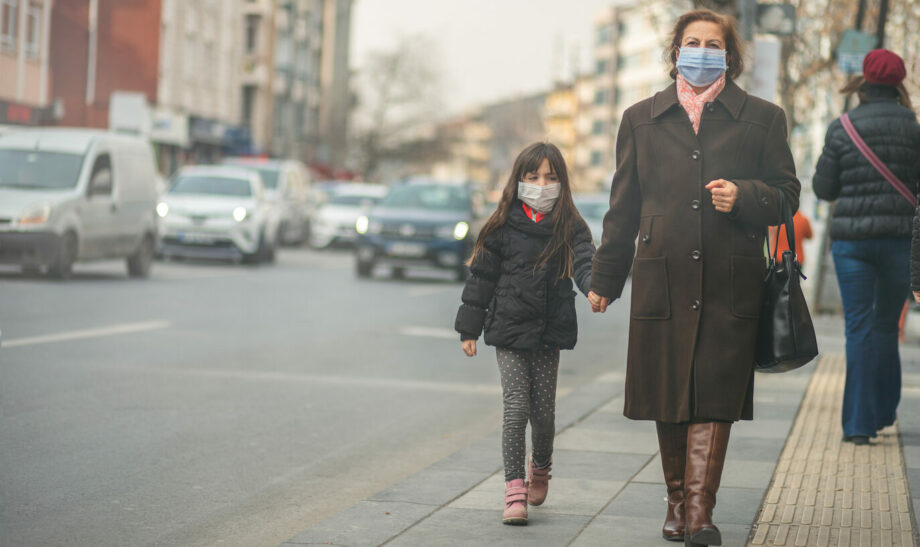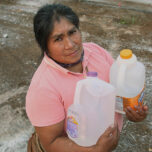January 19, 2023 — A few months into the Covid-19 pandemic, the U.S. Centers for Disease Control and Prevention suggested that people drive alone to work to reduce infections. Perhaps good advice for avoiding the virus — but what it didn’t consider was a less obvious adverse impact on health: Doing so would increase air pollution, which, in addition to contributing to lung and heart disease, research shows is linked to increased Covid-19 infections and more severe illness and death in people with Covid-19.
This episode illustrates a disconnect between environmental protection and human health that is decades in the making. When the U.S. Environmental Protection Agency was established in 1970, many preexisting programs at other federal agencies that addressed the health impacts of environmental conditions (for example, drinking water quality and air pollution control) were moved there. The subsequent separation of various environmental health functions among diverse agencies also took place at the state and local levels, leading to poor coordination and “inadequate attention to the health dimensions of environmental problems,” according to the National Academy of Medicine (formerly the Institute of Medicine). Describing this environmental health “infrastructure landscape,” Johns Hopkins Bloomberg School of Public Health assistant dean for public health practice Beth Resnick has written: “Often, the fragmentation of health and environmental agencies results in agencies with distinct missions without adequate support and staff to properly share data and information, as well as to coordinate efforts with one another and their constituencies.”
David Dyjack, executive director of the National Environmental Health Association, notes that environmental health — the field concerned with the relationship between the natural and manmade environment, including pollution and toxic chemicals, and human health — is often seen as distinct from public health. Environmental agencies may lack deep expertise about public health, while in some public health departments, environmental health is mostly limited to fee-based services like restaurant inspections, he says. That can leave newer, serious issues unaddressed. “What doesn’t get done,” says Dyjack as an example, “is microplastics.”
How can the decades-long fracturing of environmental health and public health disciplines be healed so that, for example, clean air is seen as a bulwark against infectious disease rather than a severed issue?
Meanwhile, the many issues where public health and environmental health intersect are not going away, and in some cases are becoming more common. For example, infectious disease is on the rise due to climate change: Pests are moving poleward as temperatures warm, and more frequent rain and floods increase exposure to disease-carrying insects.
The question is: How can the decades-long fracturing of environmental health and public health disciplines be healed so that, for example, clean air is seen as a bulwark against infectious disease rather than a severed issue?
The Bigger Picture
Education is fundamental to ensuring that decisionmakers understand these linkages, a group of experts argued in the American Journal of Public Health in 2021. Those experts note that the environmental health content of Master of Public Health (MPH) degree programs has declined since changes made in 2016 by the body that accredits public health schools. “The lack of [environmental health] content in MPH programs places the already strained public health workforce at risk for not adequately understanding the close interdependence of health on the environment and the major public health challenges of our time, from climate change to systemic racism,” they write.
In an effort to reconnect public health and environmental health, Johns Hopkins University’s Bloomberg School of Public Health and the Whiting School of Engineering created the Department of Environmental Health and Engineering, aiming to train students “to improve the health of the Earth and its inhabitants.” Examples of course offerings include “The Global Environment, Climate Change, and Public Health” and “Environmental Justice and Public Health Practice.”
At the state and local government levels, the separation of environmental protection and public health means that the extent of environmental health activities, which can range from inspecting pools and restaurants to switching to safer cleaners and pest control practices and beyond, varies greatly — and ends up depending on local interests, Dyjack says. Where environment health and public health are integrated, he says, “it is because there is an inspired board of health or health official.”
A long-needed conversation, and some action, about strengthening the connections between environmental health and human health is starting.
Palak Raval-Nelson, Philadelphia’s deputy health commissioner, is one of these officials. She aims to understand the big picture when it comes to problems like junkyard fires, which can release toxins into the air. On this issue, she is partnering with other city departments like public works and licenses and inspections, and the state environmental protection agency, among others. While working on immediate necessary responses to issues such as this, she simultaneously strategizes how to prevent recurrences, through legislation or regulation.
The key is “being able to understand the details, but also see the bigger picture,” she says. “I like to take a step back and think about which departments would be involved and identify any and all of the potential stakeholders and reach out to them.”
Internationally, the 2008 Libreville Declaration on Health and Environment in Africa, signed by environment and health representatives from more than 50 African countries, commits signatories to implementing measures aimed at strengthening understanding of, and action on, the impacts of the environment on health. The impetus: recognition that more than one in five deaths in Africa are attributable to environmental factors like contaminated water and air pollution.
A 10-year assessment from the World Health Organization and the United Nations Environment Programme found progress, although uneven, in achieving the declaration’s goals. For example, just 12 of 44 countries that responded to a survey have developed environmental health policies.
Health Impact Assessment
One tool for bridging the environment health–public health split is the health impact assessment (HIA). A process that community members, practitioners and decision makers can use to analyze how a proposed project, program or policy could affect the health of area residents, the HIA is based on recognition that environmental, housing and transportation actions often have implications for health. By bringing a wide lens to potential health impacts of an action, an HIA can help to increase health benefits of the action, as well as minimize downsides to health that might otherwise be unforeseen or unintended.
HIA “is a tool, but it is also a call to action,” says Sean Valles, associate professor and director of the Center for Bioethics and Social Justice at Michigan State University. For example, he says, decision makers might propose rerouting a road to save a natural area, without considering the well-being of people living in nearby affordable housing that would have to be demolished. “There will be costs and benefits,” Valles says. “We need to look fully at the impacts.”
According to Peter Orris, a professor at the University of Illinois (UI) Chicago School of Public Health and chief of occupational & environmental medicine at UI Health, the benefit of an HIA is that it “places environmental health risk within a human health context.
“One has to translate into health impacts, and therefore identify [for example] how many cases of breast cancer we’re talking about [from a pollution exposure] and over what period of time,” he says. “That’s the HIA done successfully.”
Take microplastics, tiny plastic particles that are now ubiquitous in the environment and may pose health risks to people and animals. To reduce them, Orris notes that “we need to figure out how we do this with an eye on human health,” going beyond the issue of detrimental impacts to aquatic ecosystems and animals.
Conversation and Action
Some hospitals and health systems have awakened to the effects of their own fossil fuel use and waste generation on asthma, heart disease and other illnesses they treat. In such cases, they are reducing their environmental footprints in order to improve patient and community health, and sometimes partnering with the governments in their geographic areas.
For example, Cleveland Clinic and nearby hospitals have supported local public transit routes, in part to reduce air pollution linked to disease. Kaiser Permanente health system includes indicators of environmental health, such as tree cover and air pollution, in its Community Health Needs Assessments that are required under the Affordable Care Act. Its corresponding implementation strategies describe its environmental stewardship activities that contribute to health.
Related Posts
Ensia shares solutions-focused stories free of charge through our online magazine and partner media. That means audiences around the world have ready access to stories that can — and do — help them shape a better future. If you value our work, please show your support today.
Yes, I'll support Ensia!



